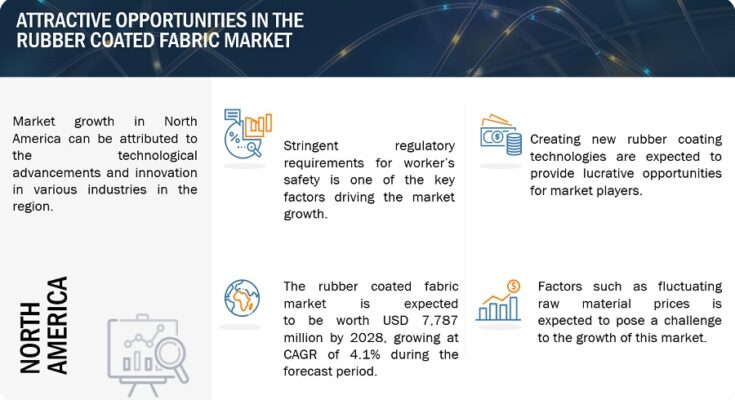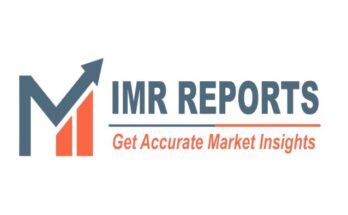Rubber coated fabric refers to a material composed of a fabric substrate coated or laminated with a layer of rubber or rubber-like material. This coating provides the fabric with enhanced properties such as water resistance, durability, and flexibility, making it suitable for various applications including protective clothing, industrial equipment covers, inflatable structures, and automotive components.
The global rubber coated fabric market size is projected to grow from USD 6,357 million in 2023 to USD 7,787 million by 2028, at a CAGR of 4.1% from 2023 to 2028. Various sectors, including the automotive, aerospace, healthcare, building, and sporting goods industries, are the main drivers of the need for rubber-coated fabric. The need for rubber coated fabric is anticipated to rise as these sectors develop and innovate.
Download PDF Brochure: https://www.marketsandmarkets.com/pdfdownloadNew.asp?id=157788576
Based on type, the synthetic rubber coated fabric was the largest segment in 2022. This growth can be attributed to the ability to customize synthetic rubber coatings to match specific performance needs. Manufacturers can modify the composition and attributes of synthetic rubber coatings to improve qualities including flexibility, abrasion resistance, chemical resistance, and weather resistance.
Based on application, the protective suits & gloves are estimated to grow at the highest rate during 2023 to 2028, in terms of volume. In several industries, the use of proper personal protective equipment (PPE) is required by strict occupational safety requirements and standards. Rubber coated protective clothing such as suits and gloves offer protection from occupational threats such as chemicals and biological agents. The need for rubber-coated fabric in the creation of protective suits and gloves is driven by compliance with these rules.
Based on end-use, the transportation & watercraft segment is projected to be the largest market during 2023 to 2028, by value. Fabric that has been rubber coated is good at sealing and waterproofing. Rubber-coated fabric is used in transportation applications such as truck tarps, vehicle wraps and cargo containment to assist shield the cargo from moisture, dirt and other outside elements. Rubber-coated fabric is used for boat covers, sailcloths, inflatable structures, and other parts that need to be waterproof and airtight in watercraft applications. Such uses further propel market growth of this segment.
Based on region, Middle East & Africa is anticipated to grow at the highest CAGR from 2023 to 2028, in terms of value. With the creation of manufacturing facilities and industrial zones, the MEA region is rapidly industrializing. Conveyor belts, seals, gaskets, and protective covers are just a few industrial uses for rubber coated fabric. Thus, rubber-coated fabric is in higher demand due to the expansion of industrial sectors in the MEA region.
Inquiry Before Buying: https://www.marketsandmarkets.com/Enquiry_Before_BuyingNew.asp?id=157788576
Some of the major players operating in the rubber coated fabric market include Continental AG (Germany), Trelleborg AB (Sweden), Saint-Gobain S.A (France), Colmant Coated Fabrics (France), The Rubber Company (England), White Cross Rubber Products Limited (England), Caodetex S.A. (Argentina), Auburn Manufacturing, Inc. (US). The companies have widespread manufacturing facilities with an established portfolio of rubber coated fabrics, a global market presence, and a strong focus on strategic developments.
Read Our Trending Press Release Below:
Industrial Lubricants Manufacturers


